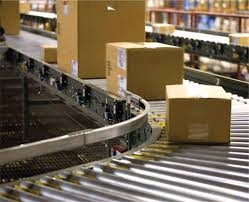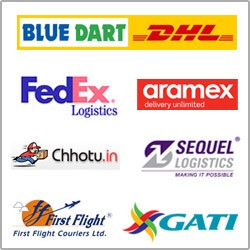Distribution is the key component in e-commerce

Today e-commerce is become part of our life. The arrival of e-commerce and m-commerce (mobile) has transformed the entire retail sector. Retailers are tapping multiple channels for selling their merchandise; from traditional stores, using catalogue, through the internet and more and more via smart phones and tablets, no stone is left unturned. Technological advancement means that the store is omnipresent! It’s now everywhere, in consumers’ pockets, at their homes and at the mall too. For surviving the competition in the e-commerce world distribution has become key component of the business. Supply chain and logistics experts have become key players and the other important element being real estate – strategic locations for Distribution Centres (DC).
While retailers are developing their multichannel strategy multichannel marketing which refers to the practice by which companies interact with customers via multiple channels, both direct and indirect, distribution strategies also need to be worked at a faster pace especially when the bar has been raised with delivery models like same-day and next-day delivery at the customer’s doorstep.
Retail supply chain executives go for locating fulfilment facilities closer to their customer base in order to meet service commitment goals such as aggressive delivery schedules.
Retail chains are therefore finding online logistics more cost-effective. They rather opt for this than open more traditional stores that require an entirely different kind of distribution model. Therefore, retailers are evolving their regional distribution networks with the addition of e-commerce distribution centres. Traditional warehouses which act as stores require lesser investment and machinery and fewer staff. The new e-commerce distribution centres, which involve direct order fulfilment, can cost three times as much and involve three times as many employees.
Retailers need to consider points such as proximity to key customers, tax incentives, sales tax and the availability of local labour which are vital for business when searching for the right location for their e-commerce distribution centres. Also, the global spread of technology into multichannel retailing has also opened up new markets in both developed and developing countries. While online sales are growing in the United States and UK, China and Hong Kong are following the trend. China’s consumers are fast embracing e- and m-commerce and are spending most of their money online. And as technology and commerce is expanding faster, retailers are finding it difficult to keep pace with logistics and infrastructure because these two fields are still emerging with newer software and newer gadgets.
In most cases domestic logistics service providers are unable to provide services to fulfil high volumes of customer parcel shipping at low costs and within a realistic delivery time frame, this noticeably impacts the direct-to-customer channel. Retailers have to thus establish their own distribution networks or rely on outsourced express shippers. This leads to an opportunistic gap in the market for third-party (3PL) and forth-party (4PL) logistics companies and investment in industrial real estate infrastructure.
In the US for the past two decades, U.S. companies have been shifting production to markets with lower labour costs. However, as energy costs rise and labor becomes more expensive in Asian markets, companies are increasing near-shoring and on-shoring. Firms which opt for all-water options but cannot tolerate the lengthy shipping times from Asia are shifting some operations to near-shoring destinations such as Mexico or Central and South America and even back to the United States. With production and demand closer to home, retailers can respond more quickly to trends and changes in buying patterns.
 Nearly 80 percent of retailers say that online sales have increased in the past five years with some reporting increase of 25 percent or more. This has forced retailers to change the traditional distribution network for their e-commerce model. 3PL and 4 PL providers have gained a huge role to play in the e-commerce business model.
Nearly 80 percent of retailers say that online sales have increased in the past five years with some reporting increase of 25 percent or more. This has forced retailers to change the traditional distribution network for their e-commerce model. 3PL and 4 PL providers have gained a huge role to play in the e-commerce business model.
Generally, 3PL provider’s main business is to provide logistical services as its core activities. The logistics services offered are based on the range of its logistics’ function. They include freight forwarders, courier companies and other companies integrating & offering subcontracted logistics and transportation services. 4 PL differs from third party logistics in some of these ways: 4PL organization is often a separate entity established as a joint venture or long-term contract between a primary client and one or more partners; 4PL organization acts as a single interface between the client and multiple logistics service providers; ideally all aspects of the client’s supply chain are managed by the 4PL organization; and it is possible for a major third-party logistics provider to form a 4PL organization within its existing structure.
4PL was originally defined by Accenture as a trademark in 1996 and defined as “A supply chain integrator that assembles and manages the resources, capabilities, and technology of its own organization with those of complementary service providers to deliver a comprehensive supply chain solution.” but the concept has almost changed at present.
4PLs have also been referred to as “Lead Logistics Providers”. In the present scenario, new crop of companies have emerged who are actual transportation companies too. While a 4PL is sometimes described as non-asset-owning service provider, their role is to provide broader scope managing of the entire supply chain. The 4PL model offers a platform to get companies thinking about long-term strategy; developing an idea of what they want their future supply chain scene to look like.
If you look closer, the 4PL model actually drives 3PL outsourcing. The difference between the two activities ultimately comes down to scope. In a traditional transactional role, the 3PL will hold on to scope—managing a warehouse, for example. With a 4PL model, the scope recedes and flows. The service provider scales resources depending on different skill set requirements that turn upwards.
If e-commerce brings the logistics industry closer to the point of consumption, it has boosted the demand in the logistics industry. Would it be wrong if we call Amazon and Wal-Mart logistics companies? At heart, these companies are retailers; but, actually on the basis of the economics of these two companies, Amazon and Wal-Mart are far, far better at handling the logistics of their trade than their competitors and hence they are the leaders. Distribution is their core competence.
 If you read the case of Amazon.com one understands how important firm’s logistics is in e-commerce. Amazon.com has come a long way since its founder and chief executive officer, Jeff Bezos, stopped imagining the company as a virtual bookstore. It has evolved into an online retail giant that generated US $74.45 billion in revenues in 2013. It is worth mentioning that much of that came from its support of more than two million companies that used Amazon to sell their products online and distribute them to customers. Under the company’s various programs, Amazon not only provides its customers with a means of advertising and selling their products, but also offers to store those products in its fulfilment centres; pick, pack, and ship them; and provide customer service which includes handling returns.
If you read the case of Amazon.com one understands how important firm’s logistics is in e-commerce. Amazon.com has come a long way since its founder and chief executive officer, Jeff Bezos, stopped imagining the company as a virtual bookstore. It has evolved into an online retail giant that generated US $74.45 billion in revenues in 2013. It is worth mentioning that much of that came from its support of more than two million companies that used Amazon to sell their products online and distribute them to customers. Under the company’s various programs, Amazon not only provides its customers with a means of advertising and selling their products, but also offers to store those products in its fulfilment centres; pick, pack, and ship them; and provide customer service which includes handling returns.
In the process of developing its network to support those services, Amazon has built out an infrastructure which by recent account includes 145 warehouses around the world! 84 in the United States, four in Canada, 29 in Europe, 15 in China, 10 in Japan, and seven in India. This collectively accounts for more than 40 million square feet of space. Amazon has also made substantial investments in material handling systems, including the acquisition of Kiva Systems for $775 million in 2012. Kiva is now a wholly owned subsidiary of Amazon, which designs robots, software, workstations, and other hardware that has been used in the distribution facilities of companies such as Staples, Office Depot, and The Gap. The systems produced by Kiva are expected to be an integral part of the distribution network now being developed by Amazon. Amazon has also made major investments in cloud computing. At the same time, the company has been developing transportation capabilities to support its Amazon Fresh same-day grocery business. That’s called might of an e-commerce company!













































